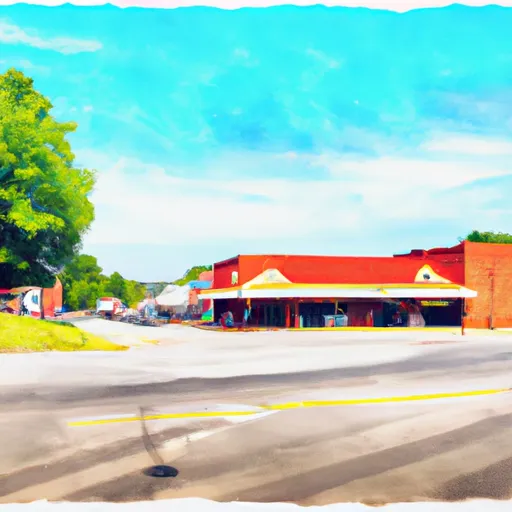-
 Snoflo Premium
Snoflo Premium
Get unlimited access to all our content
With no Ad interruptions! - Start Your Free Trial Login with existing account
Arjay
Eden Index
Climate
7.9
•
Recreation
4.3
•
Community
0.5
•
Safeguard
4.8/10

Arjay, Kentucky is a small unincorporated community located in the southeastern region of the state. The climate in Arjay is characterized by hot summers and cold winters, with an average annual temperature of around 57°F. The area is part of the Cumberland River watershed, and is home to several rivers and streams that flow through the region, including the Clear Fork River and the Laurel Fork Creek. These waterways provide opportunities for fishing, kayaking, and other outdoor activities. Arjay is also located near the Cumberland Gap National Historical Park, which offers hiking trails, historic sites, and scenic overlooks. Visitors to Arjay can enjoy the natural beauty of the area while exploring the region's rich history and culture.
What is the Eden Index?
The Snoflo Eden Index serves as a comprehensive rating system for regions, evaluating their desirability through a holistic assessment of climate health, outdoor recreation opportunities, and natural disaster risk, acknowledging the profound impact of these factors on livability and well-being.
Climate Health Indicator (CHI): 7.9
Arjay receives approximately
1309mm of rain per year,
with humidity levels near 81%
and air temperatures averaging around
13°C.
Arjay has a plant hardyness factor of
6, meaning
plants and agriculture in this region thrive during a short period during spring and early summer. Most
plants will die off during the colder winter months.
By considering the ideal temperature range, reliable water supplies, clean air, and stable seasonal rain or snowpacks, the Climate Health Indicator (CHI) underscores the significance of a healthy climate as the foundation for quality living.
A healthy climate is paramount for ensuring a high quality of life and livability in a region, fostering both physical well-being and environmental harmony. This can be characterized by ideal temperatures, reliable access to water supplies, clean air, and consistent seasonal rain or snowpacks.
Weather Forecast
Streamflow Conditions
Upper Cumberland
Area Rivers
Upper Cumberland
Snowpack Depths
Upper Cumberland
Reservoir Storage Capacity
Upper Cumberland
Groundwater Levels
Recreational Opportunity Index (ROI): 4.3
The Recreational Opportunity Index (ROI) recognizes the value of outdoor recreational options, such as parks, hiking trails, camping sites, and fishing spots, while acknowledging that climate plays a pivotal role in ensuring the comfort and consistency of these experiences.
Access to outdoor recreational opportunities, encompassing activities such as parks, hiking, camping, and fishing, is crucial for overall well-being, and the climate plays a pivotal role in enabling and enhancing these experiences, ensuring that individuals can engage in nature-based activities comfortably and consistently.
Camping Areas
| Campground | Campsites | Reservations | Toilets | Showers | Elevation |
|---|---|---|---|---|---|
| Tallulah River | 17 | 1,979 ft | |||
| Sandy Bottoms Rec. Area | 14 | 2,311 ft | |||
| Tate Branch | 19 | 2,273 ft | |||
| Tsali | 41 | 1,717 ft | |||
| Georgia Mountain Fair Campground | 200 | 1,970 ft | |||
| Jackrabbit Mountain | 100 | 1,959 ft | |||
| Standing Indian | 100 | 3,406 ft | |||
| Lake Chatuga | 10 | 1,973 ft | |||
| Clay Co Park | None | 1,974 ft | |||
| Gibson Cove - Chatuge Reservoir | None | 1,939 ft |
Nearby Ski Areas
Catastrophe Safeguard Index (CSI):
The Catastrophe Safeguard Index (CSI) recognizes that natural disaster risk, encompassing floods, fires, hurricanes, and tornadoes, can drastically affect safety and the overall appeal of an area.
The level of natural disaster risk in a region significantly affects safety and the overall livability, with climate change amplifying these risks by potentially increasing the frequency and intensity of events like floods, fires, hurricanes, and tornadoes, thereby posing substantial challenges to community resilience and well-being.
Community Resilience Indicator (CRI): 0.5
The Community Resilience Indicator (CRI) recognizes that education, healthcare, and socioeconomics are crucial to the well-being of a region. The CRI acknowledges the profound impact of these elements on residents' overall quality of life. By evaluating educational resources, healthcare accessibility, and economic inclusivity, the index captures the essential aspects that contribute to a thriving community, fostering resident satisfaction, equity, and social cohesion.

